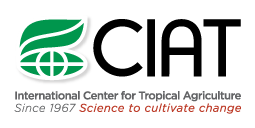Bovine intervention: making livestock production more sustainable
Colombia could soon see the widespread introduction of smarter livestock systems. If implemented, the work is expected to generate enormous savings in greenhouse gas emissions, while boosting farmer incomes and protecting forests. It could be a model for other countries in the region to follow.
With around 23 million cattle grazing an area roughly the size of Germany, Colombia’s livestock sector accounts for almost all of its agricultural greenhouse gas emissions. It is also the country’s biggest contributor to agricultural GDP.

But poor practices have resulted in low productivity and extensive land degradation, which in turn have driven widespread deforestation as farmers seek new areas for grazing. Land degradation and forest clearance are major sources of carbon dioxide emissions.
The proposed Sustainable Bovine Livestock project will focus on the introduction of mixed, rotational grazing systems to boost productivity, regenerate land and ease pressure on forests. These “silvo-pastoral” systems, field-tested by CIAT and its partners in several parts of the country, combine nutritious forage grasses that can accumulate high levels of carbon dioxide in the soil, with leguminous plants and trees that improve soil health by fixing atmospheric nitrogen. While cows graze one area, another is left to recover. In some areas, the introduction of cattle breeds that are better suited to local conditions could help improve productivity further, and by-products such as timber should enable farmers to diversify their sources of income.
If implemented across 6 million hectares of land as hoped, these systems could help capture around 167 million tonnes of carbon dioxide over the duration of the project (2018-2032). But enormous additional savings are expected as a result of “avoided deforestation”, as cattle farms become productive enough that farmers no longer need to clear trees for grazing. This could spare an estimated 2.5 million hectares of forest from being felled, averting a colossal 1.2 billion tonnes in new carbon dioxide emissions over the same period.
If implemented across 6 million hectares, silvo-pastoral systems could help capture 167 million tonnes of carbon dioxide in 15 years and spare 2.5 million hectares of forest.
See how Colombia is transforming livestock production thru silvopastoral systems #COP21 https://t.co/zshL1x8YEM pic.twitter.com/mMXHJh7lmy
— CCAFS cgiarclimate (@cgiarclimate) December 2, 2015
“With more productive and profitable systems in place, significantly less land will be needed to raise the same number of cattle, freeing up areas for conservation, rehabilitation and reforestation,” said CIAT’s Daniel Escobar, part of the team that helped calculate the possible emissions savings. “It could provide a great model for sustainable intensification, and clearly shows that smarter livestock production can make major contributions to mitigating climate change.”
CIAT hopes that its work on silvo-pastoral systems will add to the portfolio of options available for improving agriculture in rural communities previously held back by Colombia’s civil war.
What we’ve seen in Colombia is that these systems can help double or triple productivity on the same area of land. But they can work well in other parts of the tropics, where similar conditions exist.
Michael PetersWhere conditions are different, CIAT has continued its work to develop additional approaches to boosting livestock production and reducing greenhouse gas emissions. In collaboration with Princeton University and national agricultural research programs in several countries in East Africa and Southeast Asia, it has focused on improving the performance of cut-and-carry systems, where forages are grown in one location and transferred to cattle kept in feeding lots.
Increasing the productivity of forage grasses is vital in these systems, particularly as farms are often small. As well as aiding the accumulation of soil carbon, the use of high-yielding, high-quality forages is helping to boost production of both meat and milk.

